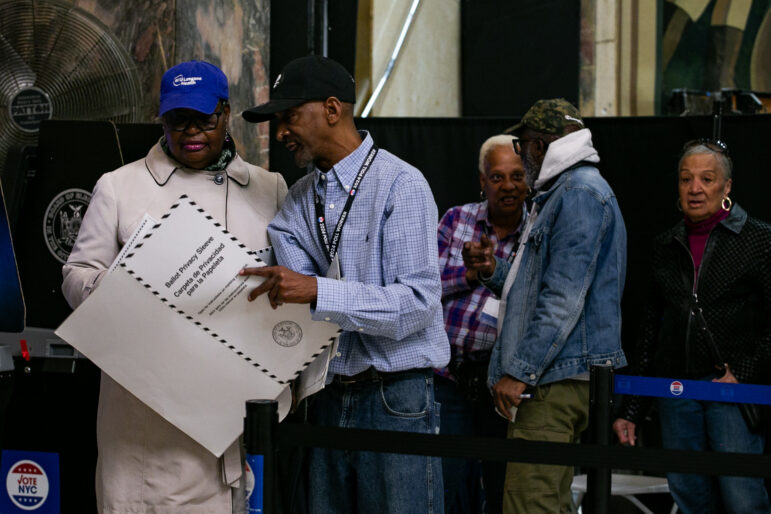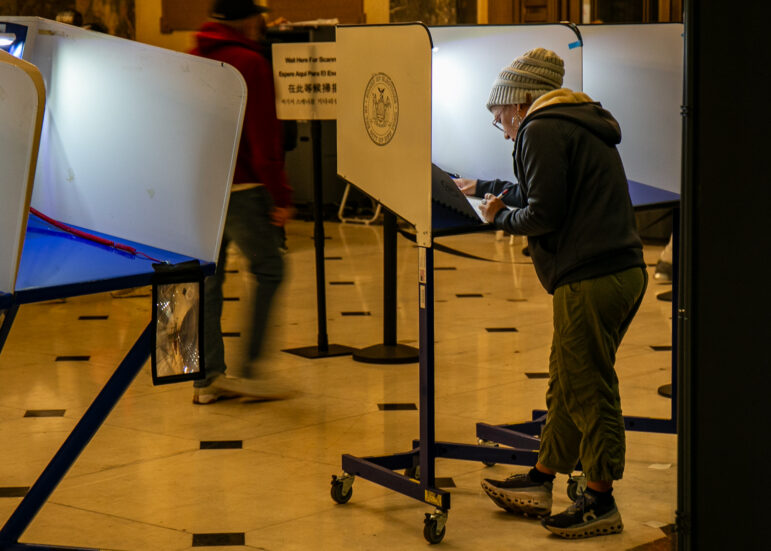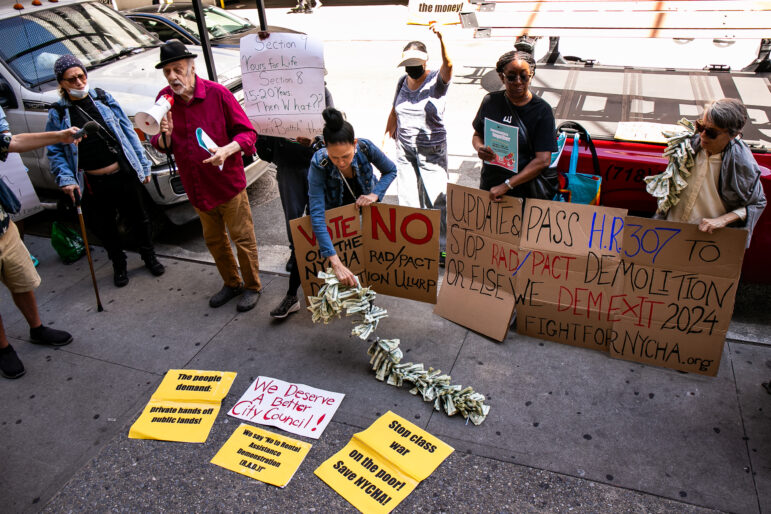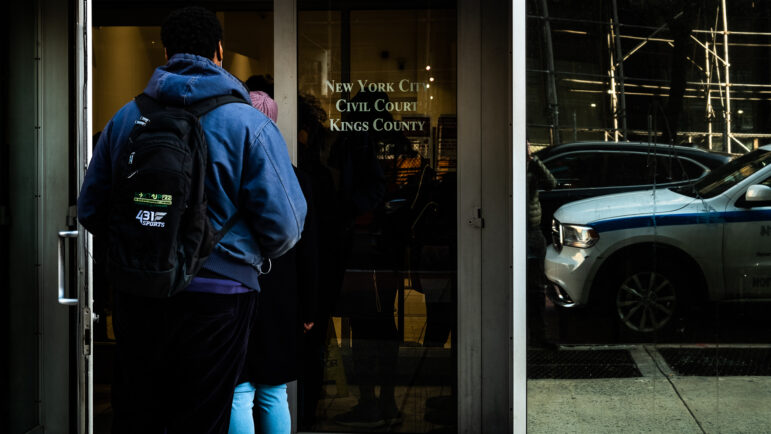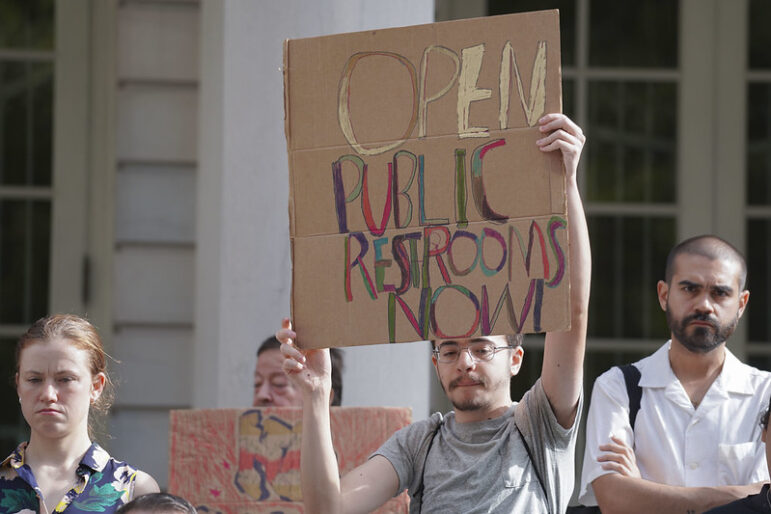Twice weekly at the Peter Cardella Senior Center in Ridgewood, Queens, a deejay sets up in the dining room and the floor fills with couples. One recent Thursday, Vincent Messina, looking sharp in a burgundy vest and black-rimmed glasses, danced through sets of boogie, Sinatra and salsa. He loves to dance, and dancing has repaid the favor. After arriving in New York from Sicily in 1954, he spent three years struggling with the new language. Then he discovered nightclubs. “I learned English dancing with girls,” Messina said with a sly smile.
Most of the clientele at the senior center, like Messina, were born in Italy and came to America in the two decades after World War II—New York’s last major Italian influx. Many of them learned English informally—in the workplace, from their American-born children, or on the dance floor. Today, their mother tongue remains a far more resilient part of the city’s linguistic fabric than many New Yorkers realize.
This past summer Mayor Bloomberg signed Executive Order 120, which requires all city agencies to translate key documents and provide translators for speakers of the top six languages outside of English. The order capped a decade-long push from various organizations, especially the New York Immigration Coalition, for improved language access services. In his statement, Bloomberg said that agencies would focus at minimum on six languages: Spanish, Chinese, Russian, Korean, French Creole – and Italian.
With five of the top six languages associated with ongoing immigration trends, Italian seems the odd one out. Does the city really need food stamp vouchers and housing forms in the language of Dante?
For the moment, say city officials, it does. According to the Department of City Planning, in 2006 almost 1.8 million New Yorkers spoke little or no English. Of these, 50.8 percent spoke primarily Spanish, 14.3 percent Chinese, 6.8 percent Russian, 3 percent Korean, 2.8 percent Italian, and 2.1 percent French Creole. That comes out to some 41,132 Italian-speakers admitting limited English proficiency.
Gone are the days when bambini flocked to Agrippino Manteo’s Sicilian marionette theater in Little Italy, and men queued to wire money at the Stabile Bank – now the
Italian American Museum – on Mulberry Street. Yet the Italian language survives in working-class pockets in the outer boroughs, where it is a vital link for the city’s aging immigrant population. As of the 2000 census, Italians were still the largest foreign-born group on Staten Island, and also predominate in neighborhoods like Ridgewood and Howard Beach in Queens, Morris Park in the Bronx, and Bensonhurst in Brooklyn.
~
At the senior center in Ridgewood, even those who are conversant in English find it difficult to navigate city bureaucracies. “You depend on your kids to help translate, but then they move away,” said Gelsomina Acierno, who was born in Naples. At a nearby table, a group of men playing cards asked a visitor to speak to them in Spanish, which they find easier to understand than English.
In the Morris Park section of the Bronx, Community Board 11 chairman Dominic Castore has seen Italian fade during his 30 years on the board. “People try to speak English—they really want to be part of this country,” Castore said. Still, not everyone conquered the language. “Some people are embarrassed to speak Italian; I tell them not to be. Sometimes they don’t know they can get food stamps or Social Security.”
For many who work in the Italian-American community, the passing of Executive Order 120 brought back memories of their parents’ or grandparents’ struggles. Vincenzo Milione, director of demographic studies at the John D. Calandra Italian American Institute at Queens College, grew up in Queens and often translated for his immigrant parents. “It’s a shame that years ago when there was a large Italian immigration and people were struggling to succeed in this city, no one cared to communicate with them,” Milione said. Still, he thinks it’s not too late for thousands of seniors who could still use the help.
As members of the post-World War II migration grow older, the number of Italians needing translation services will probably continue to fall. According to American Community Survey data, in 2006 there were 109,817 New Yorkers who spoke Italian at home, or about 17 percent of the city’s Italian-American population; that’s down from 2000, when it was 21 percent. Executive Order 120 takes such changes into account, allowing individual agencies discretion in targeting their language services—the Department of Education, for instance, has websites in Arabic and Bengali but not Italian.
Though it has long been losing ground as a language of immigration, Italian is in little danger of disappearing from New York. Just this year, the bilingual weekly Giornale Italo Americano debuted in Corona, Queens; according to publisher Jimmy Lisa, circulation is robust. “This is a vehicle for those that speak the language and want to learn English, and vice versa,” he said. “We’re building a bridge for third-, fourth-, fifth-generation Italians who want to partake in their heritage.”
In the Bronx, community leader Dominic Castore is philosophical about the fading of Italian as a household language. “There’s nothing you can do; it’s evolution,” he said. “Let me put it this way: My inheritance is Italy, but my culture is New York City. That’s America, you know what I mean?”


